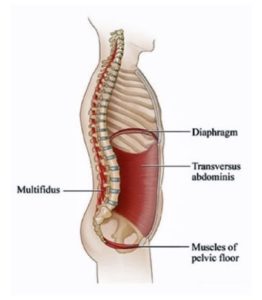Following on from Part 1 of Why Pilates Works last week, we are going to discuss how Pilates actually came about, as well as a few key principles that we use in class so that you know WHY we talk about these things so much and why they are so relevant to Pilates! I feel like people must think I’m being fussy by talking about these things when I’m teaching, but there is a reason behind them all!
But first, how Pilates actually came about
The concept of Pilates originated during the 1st World War on the Isle of Man. Joseph Pilates had been working as a boxer, circus performer and self defence teacher for detectives, when he got relocated to work in the hospitals. Appalled at the condition of the patients in their beds, Joe devised an exercise regime for the patients, and those who were practising his exercise were evidently improving faster! He then progressed his exercises to incorporate the use of resistance using the bed springs as he believed that applying progressive load would improve healing of the muscles, bones, and ligaments, and he was right! The miraculous recovery of the patients from completing his exercise routines is now said to have prevented them suffering from the deadly influenza thousands died from.
Joe then moved back to Germany after the war and he developed his exercise regime for the dance world and elite. To avoid being brought in to train the German army, he decided to move to New York and opened “The Pilates Studio” where their reputation expanded across the country and several other Pilates studios were opened to share the exercise routine we now know as “Pilates”.

Breathing patterns
The pilates breathing method encourages the natural biomechanics of your ribcage to reduce the load on your core muscles, allowing them to work without additional resistance. This then allows greater use of the core muscles!
In Pilates, we inhale to prepare, and then breathe out on the exertion part of the exercise. This is because exhaling as you contract your core causes better recruitment of the type I muscle fibres, which are our slow-twitch fibres- the core muscles essentially. If you were to inhale during exertion you will fill yourself up with air, bloating your stomach, and making it harder to contract the muscles as you would be providing a resistance for yourself to fight against.
Inhaling on exertion is often what people do when their first learning about core activation as they imagine sucking their tummy in. This activates the superficial muscles, and activates way more than what is required. Bracing the abdominals inwards with maximal effort results in activation of type 2 muscle fibres, which fatigue quickly and will not provide support for any length of time. The transverses abdominis (core) muscle is primarily composed of type 1 fibres which are well oxygenated and long-lasting without fatigue, and therefore the preferred fibres to engage. If we learn to engage these properly we should develop proper support and endurance!
The sequence of inhale/exhale throughout the exercises ensures you maintain a steady breath, even when the exercise difficulty is increased. This also works to keep the speed of the exercise stable and avoid rushing on the hard bits! So every aspect of the breath has a meaningful purpose! I also wrote more in-depth about this here if you want to read more!
Why positioning for exercises REALLY matters
Pilates exercises are always taught with a “neutral spine”. This means whatever position you are in, your spine should be aligned correctly and your pelvis in neutral. The pelvis is neither tilted forwards or backwards, and the lower spine is not arched or flattened in to the mat. Research has clearly demonstrated that the core muscles are activated much better when in this neutral position compared to a forward or backward tilt (Sapsford et al. 2009). This would also make sense because our spines are naturally curved and these curves are maintained when we walk and do activity, so why would we then want to change this ie flatten our back into the floor for exercise?! We would want to recruit the muscles in the position that is relevant to our activities.
WHY there is a specific sequence to follow

Many people may argue Pilates done on the mat is not functional or relatable to everyday activities. And they would be correct! However, learning the correct way to engage the core muscles is essential before building on this foundation. The best, and easiest way to learn this is in crook lying (on back with knees bent). Gravity is eliminated and other muscles are switched off or relaxed so that you can concentrate on isolating the core engagement without compensation from other muscles. The gentle inward movement of the lower abdominal wall when lying on your back has been shown to recruit the core with minimal activation of the more global (larger and more superficial) muscles. Other positions such as side lying or lying on your front recruit other abdominal muscles as well and thus have less emphasis on the transverses abdominis (core) recruitment.
The sequence of progressing through core/Pilates training should follow this:


- Train the supportive core (Pic 1 above)– in crook lying initially, and progress to more challenging positions
- Train the strength core (Pic 2 above)– this is the larger muscles that stabilise and support the body when load increases eg. latissimus doors, serrates anterior, the obliques, rectus abdominis, gluteals.
- Add the extremities– add movements with the arms and legs to challenge the supportive core as you move further away from the centre, as well as adding more load to challenge the supportive core musculature too.
- The end result? A fully integrated system that stabilises and strengthens your body from the deep muscle layers to the superficial muscles, preparing you for any activity or action and preventing injury along the way!




